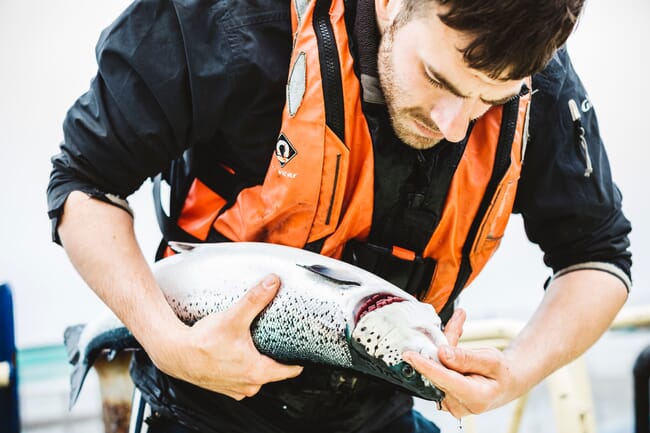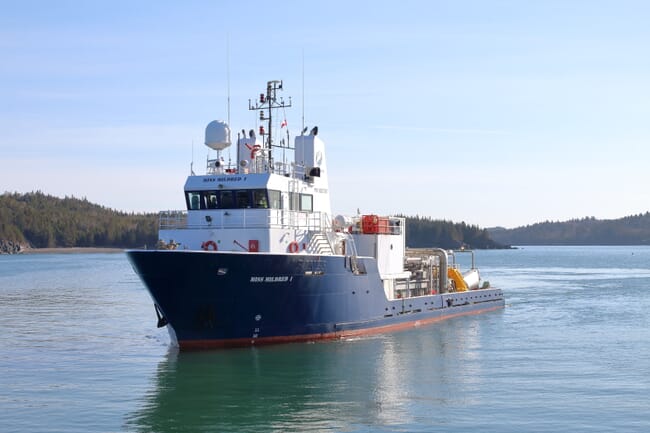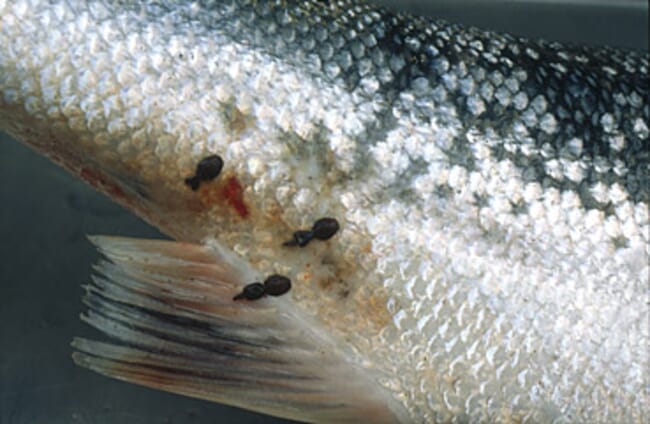Two new studies focusing on Atlantic salmon’s tolerance to thermal delousing indicate that the method may not be as welfare friendly as initially thought. Researchers evaluating the methods reported extensive tissue injuries and pain responses in the salmon used in the experiments.

Based on the evidence in the trials, the researchers concluded that Atlantic salmon find exposure to warm seawater highly aversive. They also concluded that the aversive reactions could be attributed to the sudden change in temperature, not the presence of other fish in their environment or manual handling.
Background
Thermal delousing has been heralded as an environmentally friendly way of removing sea lice in farmed salmon. Unlike most chemical therapeutants, thermal delousing doesn’t leave any environmental residues. In some cases, the method is cheaper than other delousing strategies.
During the process, farmed fish are moved into a small cage that is pumped full of warm seawater (28°C to 34°C) for 30 seconds. The fish are then released into regular fish pens, louse-free. Though the method is effective, researchers have recorded elevated mortality rates after thermal delousing when compared to chemical or mechanical removal. Producers and pathologists have also observed tissue injuries and brain haemorrhages after the treatment, raising welfare concerns. However, it’s been difficult to attribute all the injuries and fatalities to thermal treatment: some of the injuries could be attributed to panic behaviour, collisions in the thermal chamber, or manual handling.

Study one
The first study, published in Veterinary and Animal Science, wanted to establish the upper temperatures and holding times that cause severe tissue damage in Atlantic salmon. The researchers also wanted to assess whether certain injuries could be attributed to specific water temperatures during the procedure, similar to the way humans grade burns on a scale from one to three.
The researchers sourced 14 Atlantic salmon smolt and acclimated them to 8.5°C seawater. They were then dip-netted into different tanks with higher temperatures of seawater until they reached the “humane endpoint” or lay on their sides for two seconds. Their injuries were recorded and graded on a scale from zero to three.
Results showed acute tissue injuries for salmon exposed to 34°C to 38°C seawater. As the water temperature increased, injuries to the gills, skin and eyes became more pronounced. Since no injuries were reported in the control group, the researchers concluded that the tissue damage came from exposure to warm water. Data from the trial indicated that sudden exposure to high water temperatures were lethal to the salmon after 72-140 seconds.
Study two
The second study, also published in Veterinary and Animal Science, was trying to find the minimum pain threshold for Atlantic salmon. In order to test this, researchers released Atlantic salmon that were acclimated to 8°C seawater into experimental tanks with seawater ranging between 0°C and 38°C and observed them for five minutes, or until they reached the humane endpoint.
During the trial, the fish in water over 28°C reached the endpoint before the five-minute limit, whereas fish in water below that temperature survived the trial. Colder water wasn’t always better though – salmon exposed to cold seawater entered coma-like states during the trail. The researchers noted that coma-like states became more pronounced as the water approached 0°C, indicating an aversive reaction.

Salmon in water above 28°C displayed multiple behaviours that indicated pain and distress during the experiment. The researchers observed increased swim speeds, collisions, head shakes and surface breaks as the water temperature became warmer. These behaviours remained consistent until the fish lost equilibrium – a sign of imminent death. However, the researchers believed that some of the stress behaviour observed in this trial could be attributed to changing tanks and being manually netted.
Based on the experiment, the researchers placed the temperature pain threshold between 26°C and 28°C, well below the temperatures used in thermal delousing treatments.
Key take-aways
Though these trials raise serious welfare concerns, the methods aren’t reflective of commercial delousing methods. The fish in the trials had prolonged exposure to heated seawater – thermal delousing usually lasts 30 seconds or less. An additional concern is that the first study was in the pilot phase and only had 14 test subjects.
These studies didn’t explore the long-term effects of thermal delousing. According to other studies and reports from producers, many of the severe injuries and mortalities appear two weeks after salmon undergo thermal treatment. This gap in the research needs further exploration.
Given that many aquaculture firms are refining their thermal delousing methods, we are bound to see improvements in the area. However, these studies suggest that Atlantic salmon subjected to these treatments experience pain and tissue injuries after 30 seconds.



